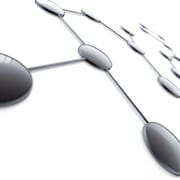The Three Dimensions of Emotionally Intelligent Leaders: Finding the Balance of Power, Heart & Mindfulness
Any discussion about leadership effectiveness would have to include the idea of emotional intelligence (EI). The research is consistent and clear: leaders with high EI are more effective and leaders with low EI get stuck or even derail. I think of emotional intelligence occurring in 3 dimensions: Power (height), Heart (width) and Knowing or Mindfulness (depth). And you have to be good in all three at the same time or you are not good at all. An EI leader moves naturally in the Power dimension. They are confident; they set sound boundaries and expectations; they influence and motivate others. They are not afraid to confront or tell (their) truth. While at the same time an EI leaders move in the Heart dimension. They are compassionate and passionate; they are employee-focused and client-focused. They deeply value others and their input. They are not afraid to ask for help; and they are strangely humble. While at the same time, EI leaders are Mindful. They are measured, peaceful, self-controlled. They are present and knowing–even wise. They feel feelings deeply but do not “leak.” When a leader positively flows in all three dimensions they naturally find their relational “sweet spot” – like a tennis or golf pro.
Lower EI occurs when out of “habit of personality” or reactivity to stress, the leader fails to move positively in any one (or two or three) of the dimensions. For example, a leader who is unsure of being vulnerable thinking it weak (Heart), will either detach and remove himself in time of need (negative Knowing) or become overly critical, defensive or arrogant (negative Power). I worked with a CEO who had notable difficulty with Mindfulness and because of this he would keep inappropriate boundaries with staff (negative Heart) and have temper tantrums (negative Power) when he did not get his way. He had no even keel (Mindfulness).
The bad news is that these reactivity patterns are burnt into our limbic system (the emotional brain). So these patterns are often “set” in place and automatic. The good news is that the brain is “elastic” –i.e., we can change the brain and thus develop emotional intelligence. But it takes focus and work. Using a technique called “Working the Triangle” leaders can identify specific positive behaviors to focus on and practice at any given time. And when they do, they can get back into balance, finding their emotional sweet spot and leadership effectiveness (and joy).
About the Author

(New Page Books, July 2016) He has worked on the three-dimensional model for nearly 35 years and has taught it to thousands of people.













Leave a Reply
Want to join the discussion?Feel free to contribute!